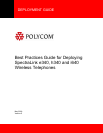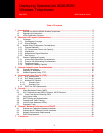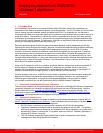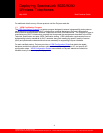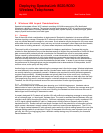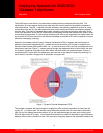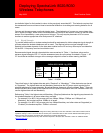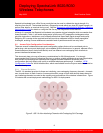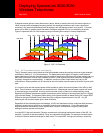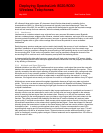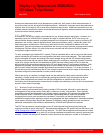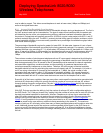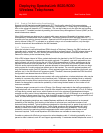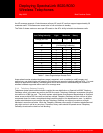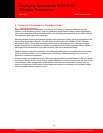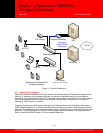
Deploying SpectraLink 8020/8030
Wireless Telephones
May 2009 Best Practices Guide
SpectraLink handsets have a Site Survey mode that can be used to validate the signal strength it is
receiving from the AP. The handset also has a Diagnostics mode which can show AP signal strength, as
well as other details, as received during a call. See the SpectraLink e340/h340/i640 Wireless Telephone
Administration Guide for details on using the Site Survey and Diagnostics mode features.
Although it is possible that SpectraLink handsets may operate at signal strengths which are weaker than
those provided in Table 1, real world deployments involve many RF propagation challenges such as
physical obstructions, interference, and multipath effects that impact both signal strength and quality.
Designing RF coverage to the required levels will provide an adequate buffer for these propagation
challenges, enabling a more reliable and consistent level of performance with low retry rates.
2.2 Access Point Configuration Considerations
There are several fundamental access point configuration options that must be considered prior to
performing a site survey and deploying a voice-capable WLAN infrastructure. In general, adjacent APs in
three dimensions (above, below and beside) must use different non-overlapping radio channels to
prevent interference between them.
This document does not cover all issues or considerations for WLAN deployment. It is strongly
recommended that Polycom Professional Service, or another suitable professional services organization,
with wireless voice deployment experience be engaged to answer additional questions about
configurations that may affect voice quality or wireless telephone performance. In addition, VIEW
Configuration Guides for WLAN infrastructure, which are available from the Polycom web site, should be
followed closely.
2.2.1 Channel Selection
The 802.11b standard provides for three non-interfering, non-overlapping frequency channels - channels
one, six and eleven in North America. Access points within range of each other should always be set to
non-interfering channels to maximize the capacity and performance of the wireless infrastructure. Figure
2 illustrates the correct deployment methodology for 802.11b deployments.
Figure 2 - 802.11b Non-interfering Channels with Overlapping Cell Coverage
8
©2009 Polycom, Inc. All rights reserved.
Polycom and the Polycom logo are registered trademarks of Polycom, Inc. All other trademarks are the property of Polycom, Inc. or their respective companies.



